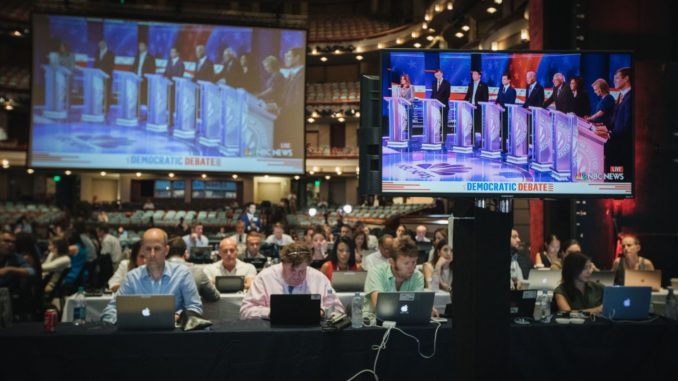
5 min read
In 2016, some were surprised when President Donald Trump won the presidential election, beating Hillary Clinton by 77 electoral votes. There are dozens of reasons people believe Trump won; however, one of the biggest was his digital marketing campaign. After all, Trump’s Twitter account, @RealDonaldTrump, has over 52 million followers, making him the number one followed world leader account on Twitter.
With the 2020 election just kicking off, all this is newsworthy again. Because, while digital marketing wasn’t the only reason behind Trump’s win, it did play a large role in his success. In fact, digital marketing has had a huge impact on all presidential candidates in recent elections and will continue to have an impact on this one.
Digital marketing, in fact, has changed everything about at least the last two presidential races — and will do again for 2020. How so? Think about how digital marketing has allowed candidates to build support through direct access to voters, improved analytics and personalized messaging, for starters.
Everything from “how it’s run” to “how it’s won” has changed and because as an entrepreneur there are certain candidates and certain changes you want to see succeed, you’ll want to pay attention to how “digital” influences the run-up to 2020. Here are the details on how digital marketing is changing politics:
Direct access to voters
In past campaigns, presidential candidates relied on television and radio ads, snail mail, cold calls and representatives to spread the word about their candidacy, their positions on issues and their goals. Because they couldn’t reach individuals directly, they had to generalize their message and hope it was conveyed the way they wanted it to be through the grapevine.
With digital marketing, candidates can reach voters directly through efforts like SEO, pay per click (PPC), blogging and more. They can ensure their message is exactly what they want, answer questions directly, make comments and interact with voters.
Personalized messaging
With direct access and the ability to customize messages instantly, presidential candidates can personalize the content they send out. Thanks to big data, candidates can see where a voter stands and tailor the message they send. For example, if a voter is on the fence, a candidate can let him or her know about a shared concern on an issue, propose a plan to address that concern and hopefully sway that person’s vote.
While it would be ideal to have every voter engaged in every election, especially those as important as the presidential race, “engagement” always varies. In the 2016 presidential election, there was a 60.1 percent turnout, up 1.5 percent since 2012, and it could be argued that that increased engagement was due at least in part to the digital marketing strategies employed.
Thanks to digital marketing, candidates can conduct more accurate polls, engage in Q&A events over the web, make comments, like comments and more. As candidates connect with voters more often, they can engage more throughout the election process — not just during debates and rallies.
Actionable analytics
For presidential candidates, digital marketing takes the guesswork out of social media and content development. Analytics is key to any type of campaign — presidential or otherwise — since it makes it possible to see what is being done well and makes adjustments to subsequent strategies to strengthen the campaign. For example, thanks to digital marketing, candidates can ensure the hashtags they use are relevant and popular. If a hashtag isn’t getting results or becomes associated with something against a particular candidate’s values, a faux pas can be avoided.
Digital marketing has even let candidates know what days and times are best for posting on social media. For example, the best day and time to post on Facebook, intriguingly, is Wednesday at 11 a.m. or 1 p.m., according to Sprout Social data pulled from thousands of customers to track engagement across major networks.
Bigger budgets
Running for president can cost a lot of money. Whether candidates use their own funds, money they’ve raised or a combination of the two, they must always work to optimize their budgets. Digital marketing helps; although it still costs money, there are lots of free or cost-effective options that beat the alternatives.
Not only can digital marketing save candidates money, but it can also help them fund-raise to get the money they need to keep their campaigns moving forward. By the end of 2016, Clinton had raised $1.4 billion, and Trump had raised $957.6 million for their respective campaigns; although not all of it was raised with the help of digital marketing, digital tools undoubtedly helped each candidate raise those all-important funds.
Marketing matters
As the upcoming election takes place, digital marketing will play a large role in how candidates reach and interact with voters to build their campaigns. Because it is now possible for candidates to reach voters personally, expect to see digital marketing efforts ramp up, geared toward earning your individual vote.
Of course, by the time the election actually rolls around, you may be sick and tired of campaigns’ ads and outreach. But their digital strategies will nevertheless make it easier for you to make an informed decision and then go out and vote.
